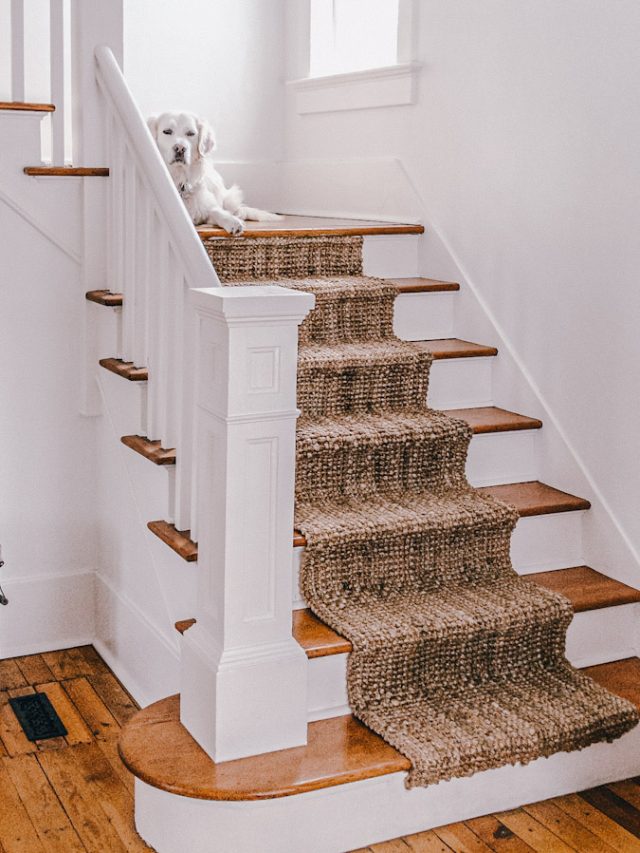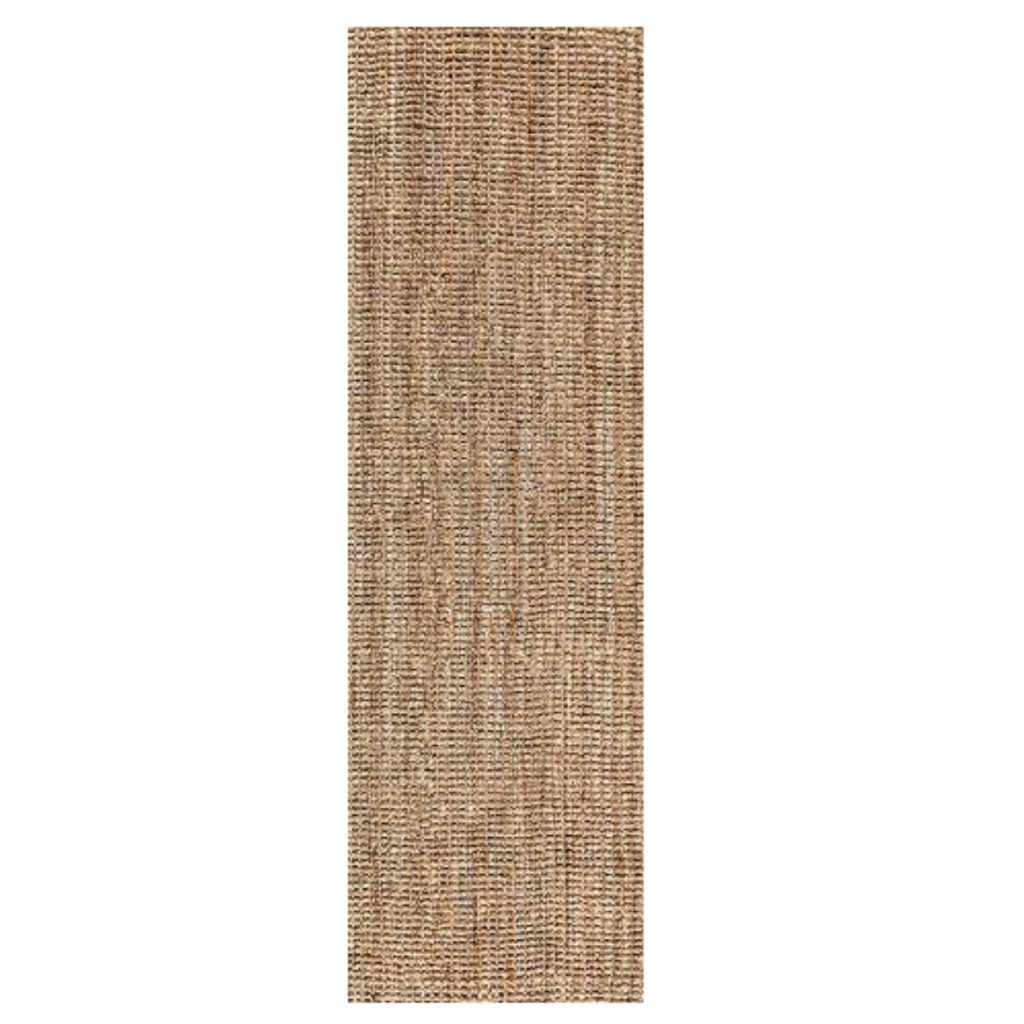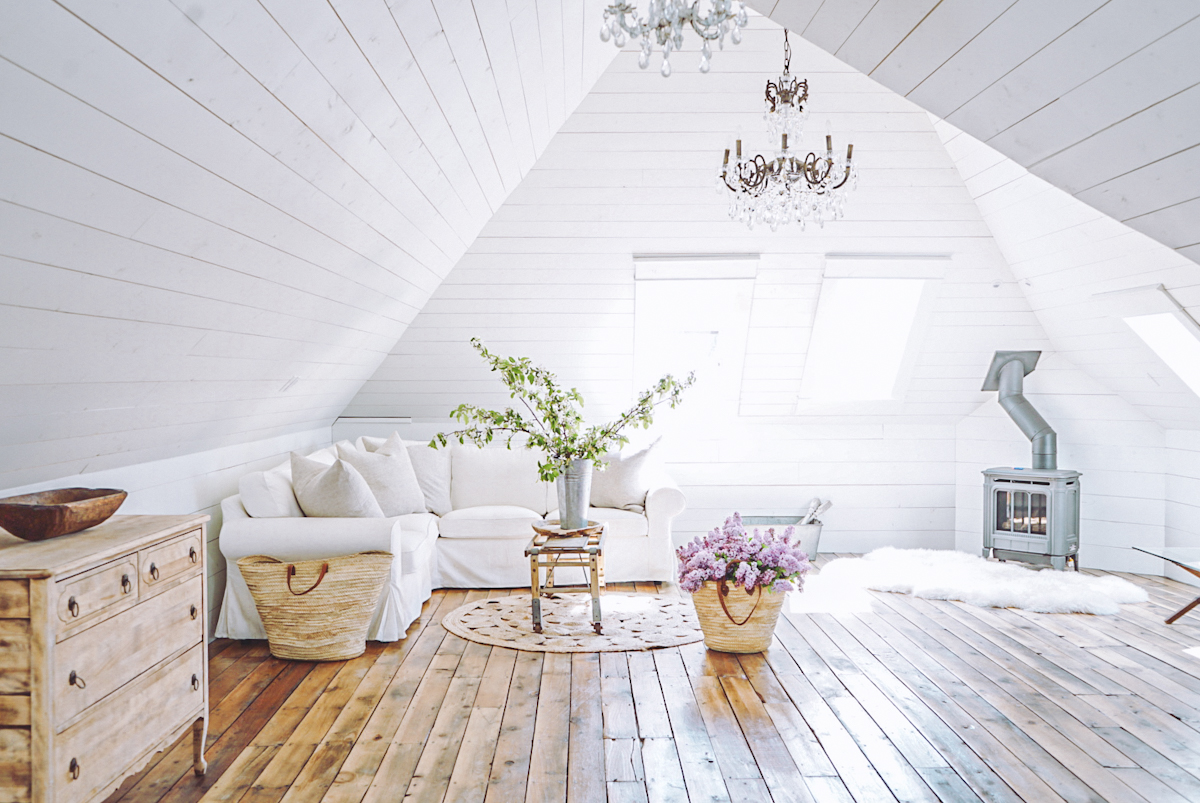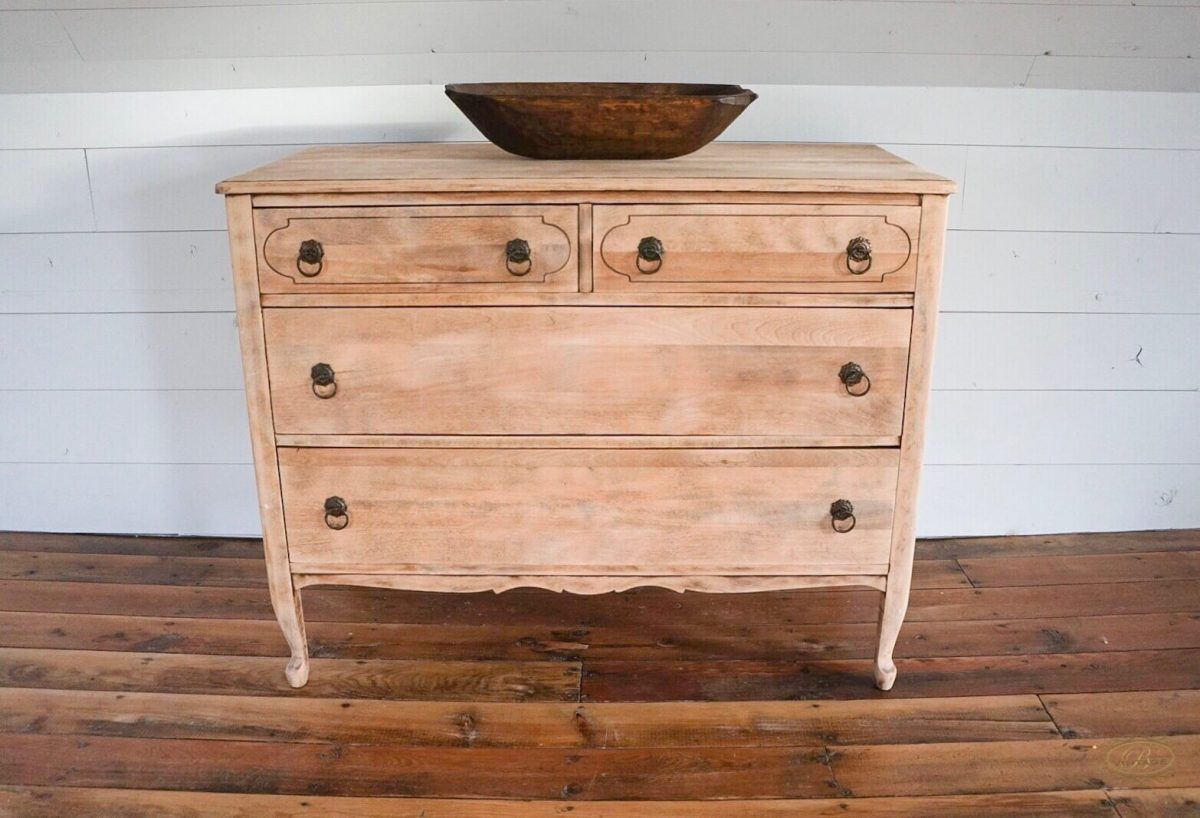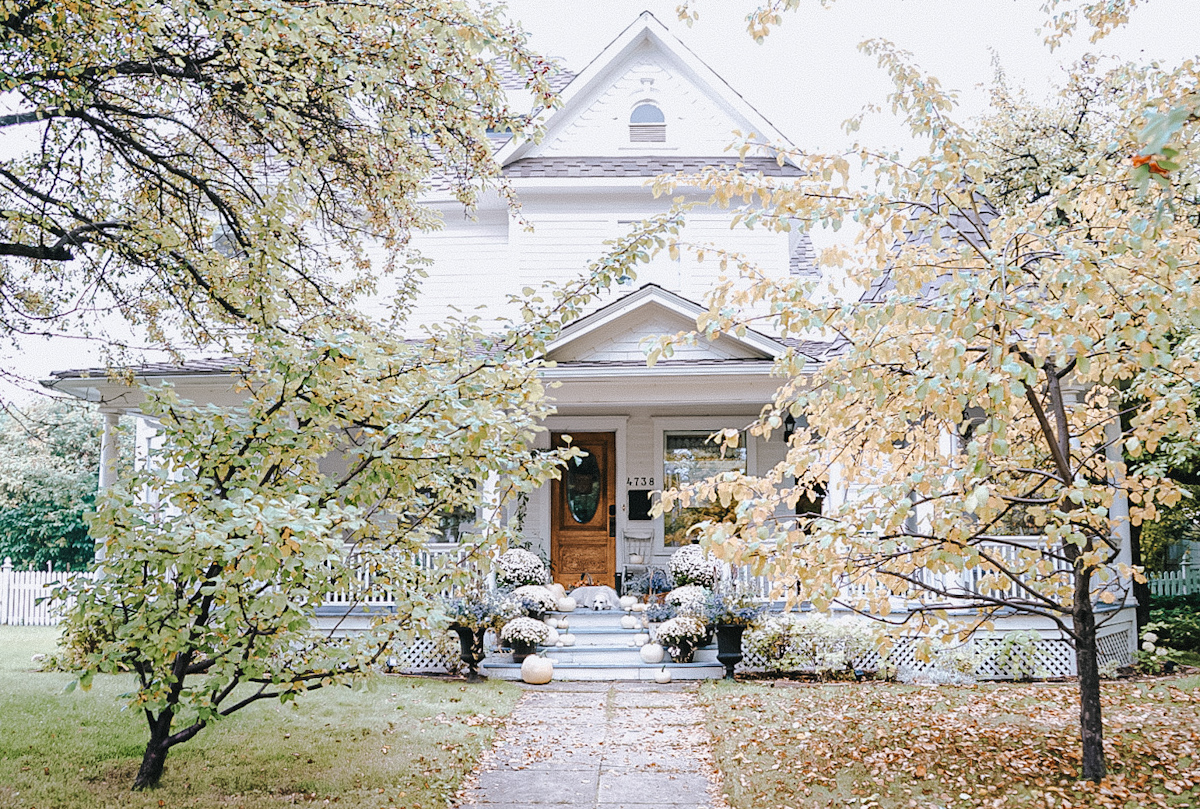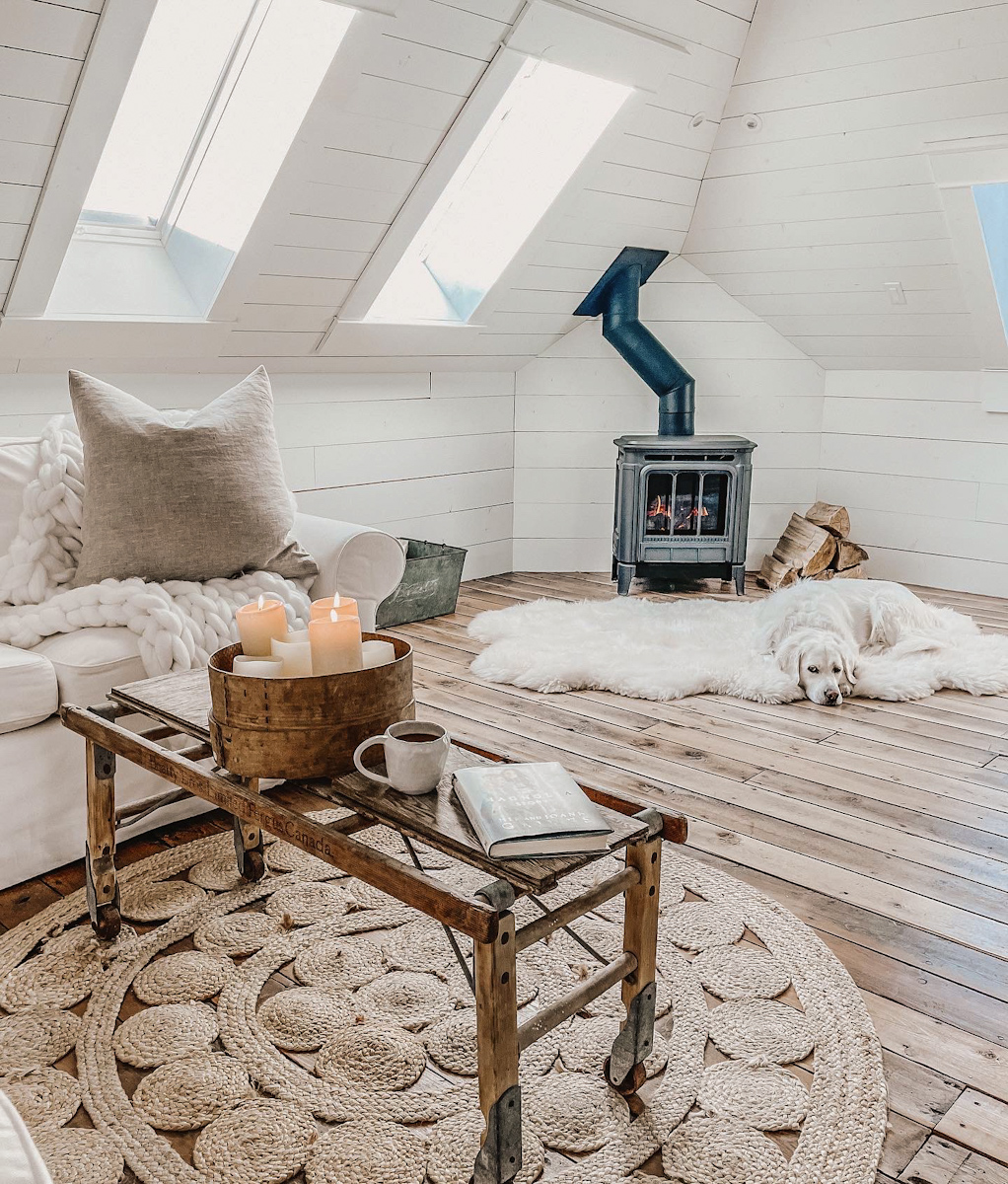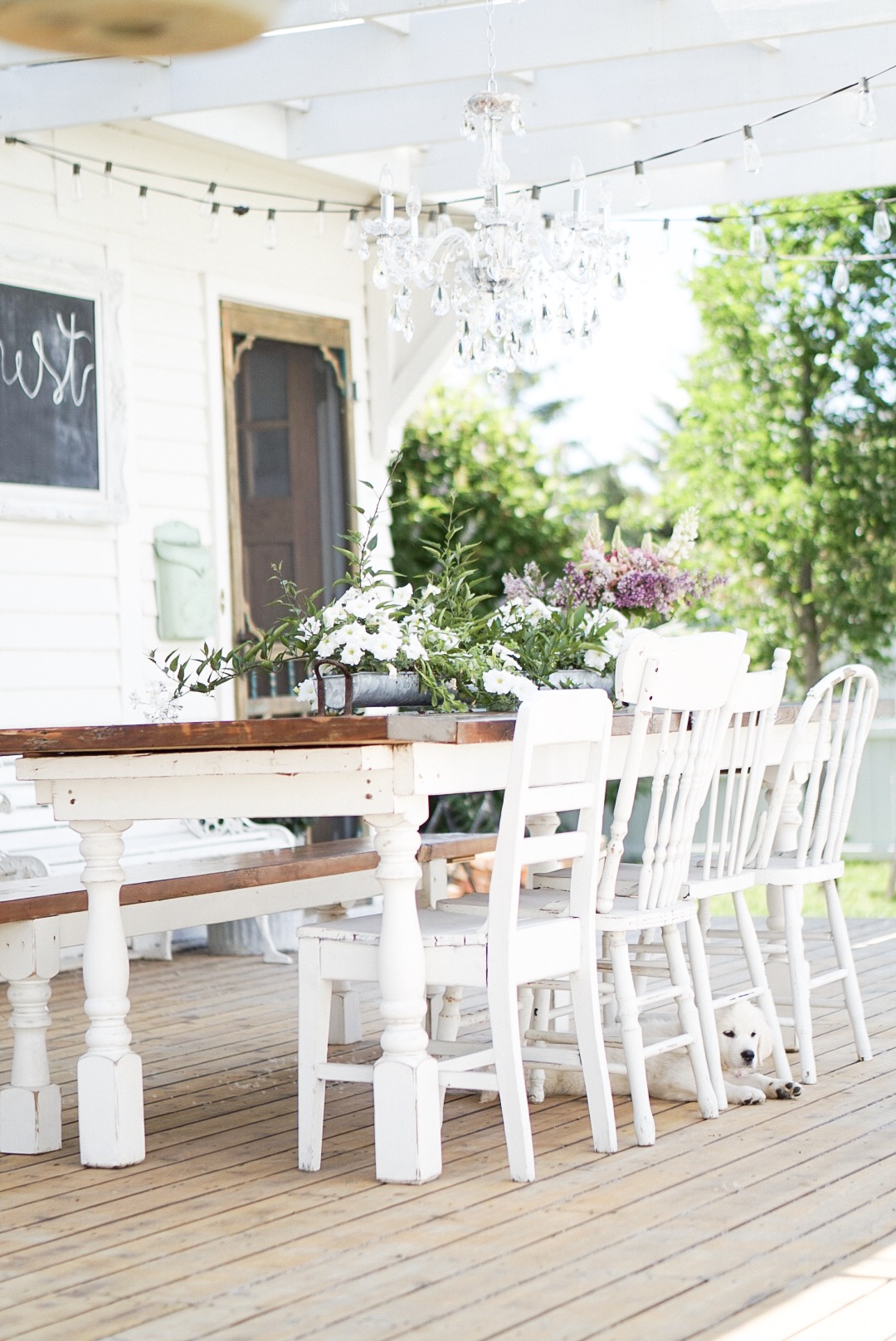This post may contain affiliate links. Please read our full Disclosure Policy.
Installing a DIY Stair Runner
Installing a stair runner may seem a tad bit overwhelming and intimidating. The truth is, it is actually a very simple, easy DIY project that with a little patience, even a beginner DIYer can take on! A beautiful stair runner not only adds texture to any staircase but is also safer than having bare wooden stairs.
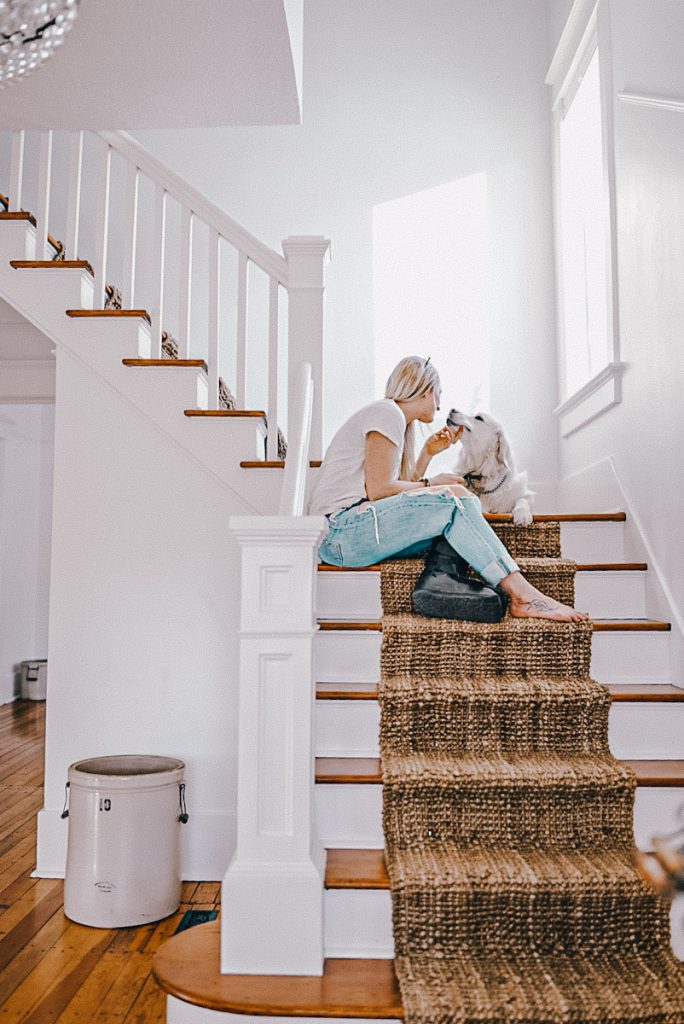
Adding Runners On The Stairs
A carpet runner is one of the elements in a home that are not only functional but can also be stylish too. A stair runner will make your staircase safer for seniors, children, and pretty much anyone who walks on them (we have had a kid or two bail before). Not only that but they will also help with noise insulation in the space too.
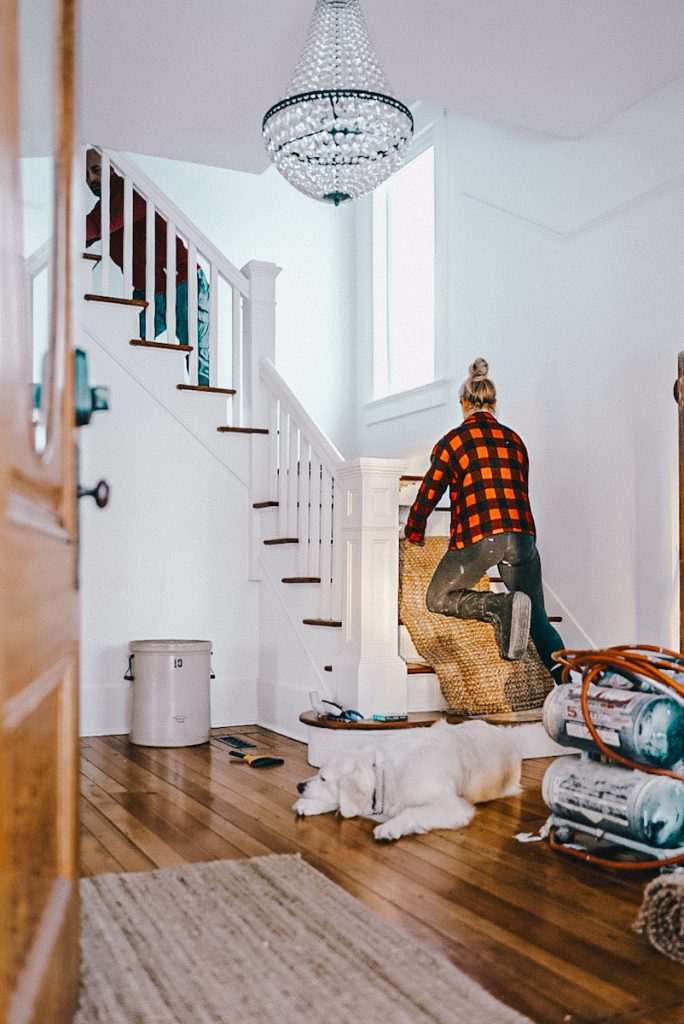
Stair Runner Details
There are many different types of rugs that can be used as stair runners and the sky is truly the limit when it comes to making them stylish too. Add furniture tacks for a metal accent to the edges, perhaps some numbers on the front of the stair or even some painted details if you really want to get creative.
Best Carpet For Stair Runners
With all the different options of carpets out there, you really can have just about any texture or style of custom runner. Some, however, are easier to work with as a DIY’er than others.
In my experience, you want to have longer rugs and a runner that is not too thick (or too thin) with a bit of give to it. If you make a mistake, it is much easier to fix a runner that can be slightly manipulated over one that is very stiff.
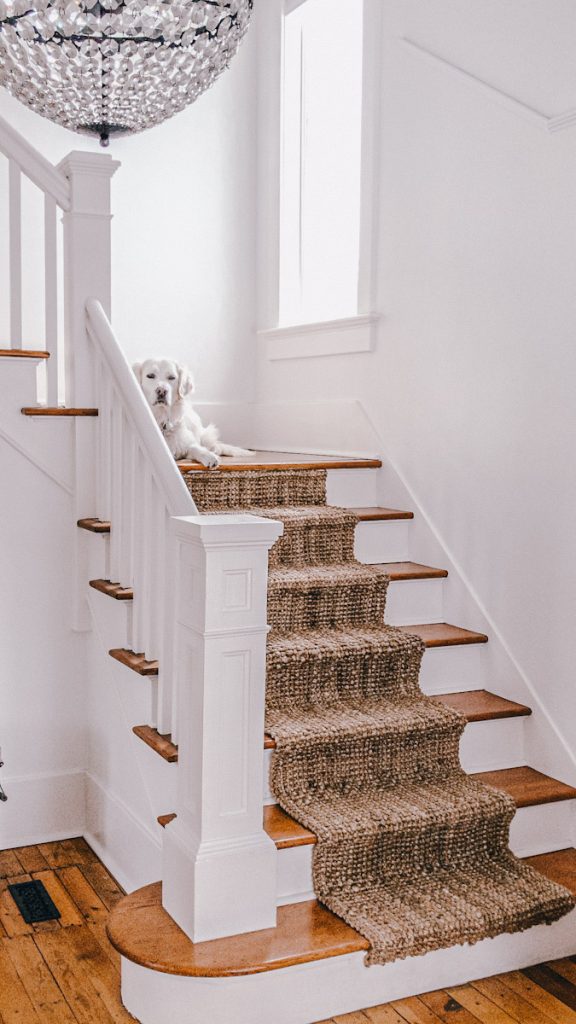
Pros and Cons of Using A DIY Jute Runner
Jute carpet runners are a popular choice and a very inexpensive stair runner option.
Pros of Jute Rugs
When it comes to permanent items in the house, I am not big on patterns. I LOVE the look of jute floor runners because the texture adds to any space or design. The natural fibers of the jute look give a finished feel to the area but don’t overpower the other elements in the space. Jute leaves room for a bold statement from the furniture or decor items in the room instead.
Jute rugs also don’t show a lot of dirt or stains which is always a plus when you have small children.
Cons of Jute Rugs
Jute rugs do have some downfalls, however! Probably the biggest drawback to jute rugs is that they shed and deteriorate over time. The lifespan of a jute stair runner may be shorter than that of a rug made from a different material.
My original jute stair runner was made out of far thinner jute door mats and had begun to fray after just two years of use. This time I beefed it up using chunkier jute floor runners. They did cost more than I had hoped, but now these rugs will last a VERY long time.
Measuring Dimensions for a Stair Runner
Measuring the right length of rug you require for your stair runner is so important. The last thing you want is to be ready to install and not have a long enough rug for your area. It is very easy to measure for your runner ahead of time and good practice to order a bit of extra length too.
Using a measuring tape, measure the size of the stair. Multiply the number of stairs you have by the inches per stair, then divide by 12 to get the total linear feet required for your runner. I recommend that you then add an extra 12” to your stair runner for good measure.
The width of the rug is completely up to your personal preference.
$12.99

How to Install A Stair Runner
Now that you have an idea of what type of carpet you want to use and how much you need, let’s start installing your beautiful runner. Below is a step-by-step guide on how to make your very own DIY jute stair runner.
Tools For Installing A Stair Runner
Pneumatic Brad Nailer, 2 in-1 Nail Gun and Crown Stapler
12.2 x 11 x 2.8 inches

- Air compressor
- Utility Knife
- Tape Measure
Supplies For DIY Stair Runner
- Jute rugs (About 3′ extra than the length of your stairs)
- Thick Rug Pads
- Rug tape
- 9/16 Long Heavy-Duty Staples
- Construction Adhesive and caulking gun
- Optional* House numbers for the stairs with extra-long black screws
Directions To Install A Stair Runner
- To begin your new stair runner, the first step is to lay your rug pad in the center of the stairs and using the staple gun secure it to the hardwood surface. You can also install the carpet pad by applying strips of carpet tape too.

- First thing, cut the end of your construction adhesive. Apply it in a zigzag motion to your first stair, starting at the top of the stairs.
- Now comes the fun part, lay your jute stair runner rug down on the carpet pad, making sure it is squared to the step. Now you will need to staple a row of staples under the lip of the step and the base of the riser to secure it. Be sure to press very firmly on the staple gun to insure the staple goes deep enough into the hardwood underneath. Continue this procedure down the stairs.

- When you get to the end of the runner and need to attach a second one, run a line of construction adhesive where the two rugs meet. Measure how much area you will require for the rest of the area and using a utility knife or sharp scissors, cut the correct amount. Then, using the second runner, butt the two ends together lining the next runner up squarely and tightly.
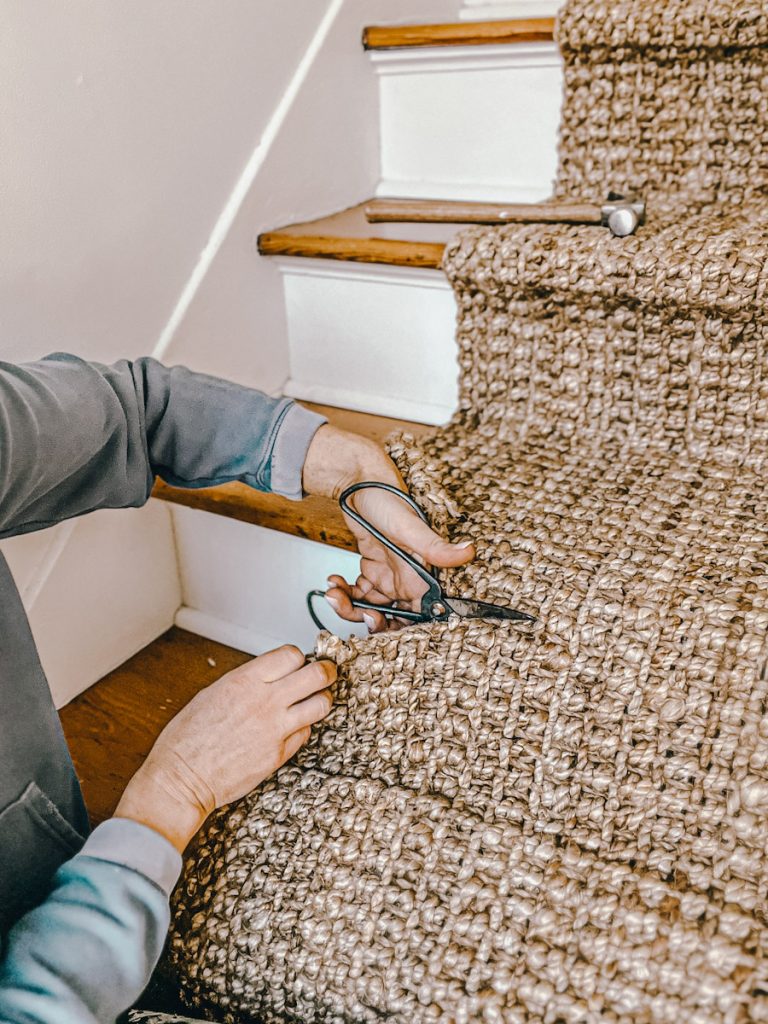
- Using the staple gun, staple a few spots on either side of both rugs. When you come to the end of the stairs, cut the previous rug underneath the lip of the stair, leaving about 2″ of the loose-end rug to fold/tuck under the rug itself and then staple it under the lip of the step. This part was definitely the most difficult part.
- Continue until you get to the bottom of the stairs or the entire staircase. There you have it!!! A beautiful, durable, and non-slippery stair runner. Check, check and check!
Tips and Tricks to Installing A Stair Runner
- Tip ** Try and find a spot that is in between the weave so that it doesn’t indent the thick part of the rug. The nice thing about using jute is that if a silver staple is showing through, you can pull at the surrounding area around the staple and usually get it covered.
- One thing to note is that jute rugs will wear out over time. Make sure to look for the thickest jute rug you can find to use if it is a high-traffic staircase. I have had to replace the floor runner approximately every three years or so.
- Make sure you install the rugs the correct way, with the finished edge side of the runner facing up. I made the mistake of installing our first runner incorrectly.
- Optional **Add a fun look to your stairs by simply adding house numbers to the face of the stairs.
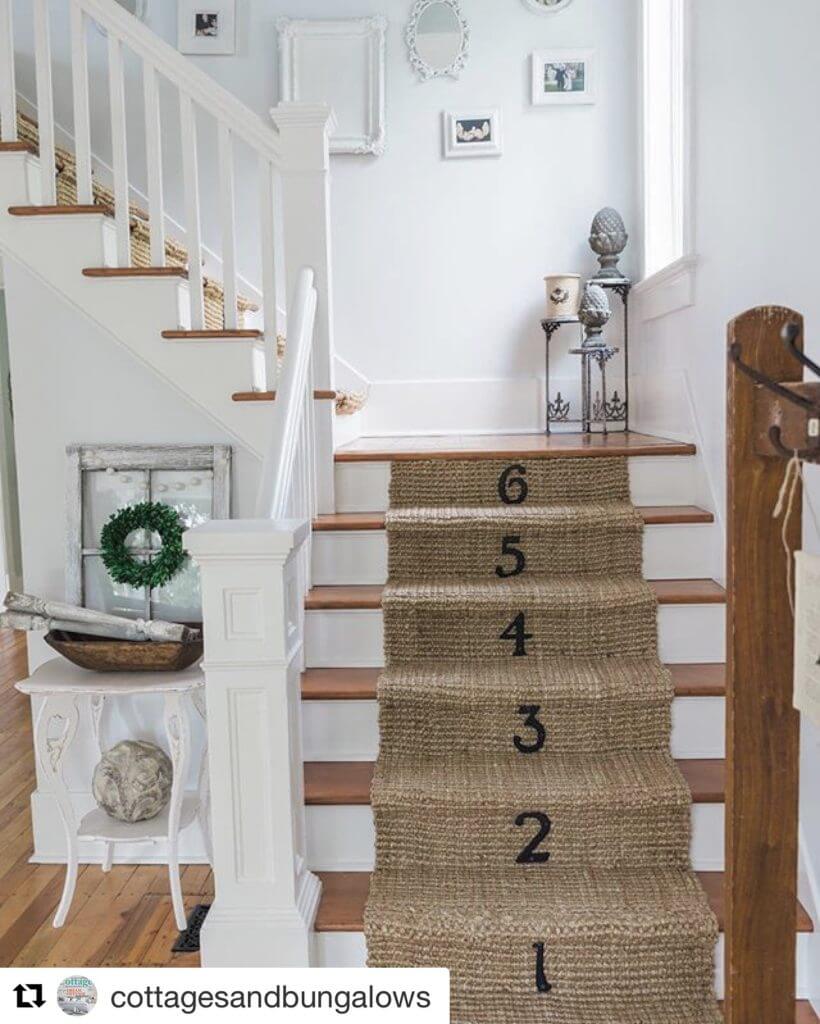
I hope you have enjoyed this post on DIY Jute Stair Floor Runners. Good luck and I would love to see your finished products. Make sure you Pin this post for later so that you can read it over again.

Frequently Asked Questions
The cost is completely dependent on the size of the stair runner that you require and the type of carpet you choose to go with. For the jute area rug, you can expect to spend about $20 to $40 per step. Other types of rugs may cost upwards of $50 to $200 per stair.
Stair runners can stay in place with construction adhesive, staples, and/or brad nails. It is a good idea to install a carpet underlay too as this will not only help the carpet last longer but it will also stop any additional slipping.
want to save this recipe?
Enter your email & I’ll send it to your inbox. Plus, get great new recipes from me every week!
By submitting this form, you consent to receive emails from B Vintage Style.
How to Install a DIY Stair Runner
Equipment
- Pneumatic Stapler or Staple Gun
- Air compressor
- Utility Knife
- Tape Measure
Materials
- 1 unit Jute rugs (About 3' extra than the length of your stairs)
- Thick Rug Pads
- Rug tape
- 9/16 Long Heavy-Duty Staples
- Construction Adhesive and caulking gun
- Optional* House numbers
Instructions
- To begin your new stair runner, the first step is to lay your rug pad in the center of the stairs and using the staple gun secure it to the hardwood surface. You can also install the carpet pad by applying strips of carpet tape too.
- First thing, cut the end of your construction adhesive. Apply it in a zigzag motion to your first stair, starting at the top of the stairs.
- Now comes the fun part, lay your jute stair runner rug down on the carpet pad, making sure it is squared to the step. Now you will need to staple a row of staples under the lip of the step and the base of the riser to secure it. Be sure to press very firmly on the staple gun to insure the staple goes deep enough into the hardwood underneath. Continue this procedure down the stairs.
- When you get to the end of the runner and need to attach a second one, run a line of construction adhesive where the two rugs meet. Measure how much area you will require for the rest of the area and using a utility knife or sharp scissors, cut the correct amount. Then, using the second runner, butt the two ends together lining the next runner up squarely and tightly.
- Using the staple gun, staple a few spots on either side of both rugs. When you come to the end of the stairs, cut the previous rug underneath the lip of the stair, leaving about 2" of the loose-end rug to fold/tuck under the rug itself and then staple it under the lip of the step. This part was definitely the most difficult part.
- Continue until you get to the bottom of the stairs or the entire staircase. There you have it!!! A beautiful, durable, and non-slippery stair runner.
Video
Notes
- Tip ** Try and find a spot that is in between the weave so that it doesn’t indent the thick part of the rug. The nice thing about using jute is that if a silver staple is showing through, you can pull at the surrounding area around the staple and usually get it covered.
- One thing to note is that jute rugs will wear out over time. Make sure to look for the thickest jute rug you can find to use if it is a high-traffic staircase. I have had to replace the floor runner approximately every three years or so.
- Make sure you install the rugs the correct way, with the finished edge side of the runner facing up. I made the mistake of installing our first runner incorrectly.
- Optional **Add a fun look to your stairs by simply adding house numbers to the face of the stairs.


